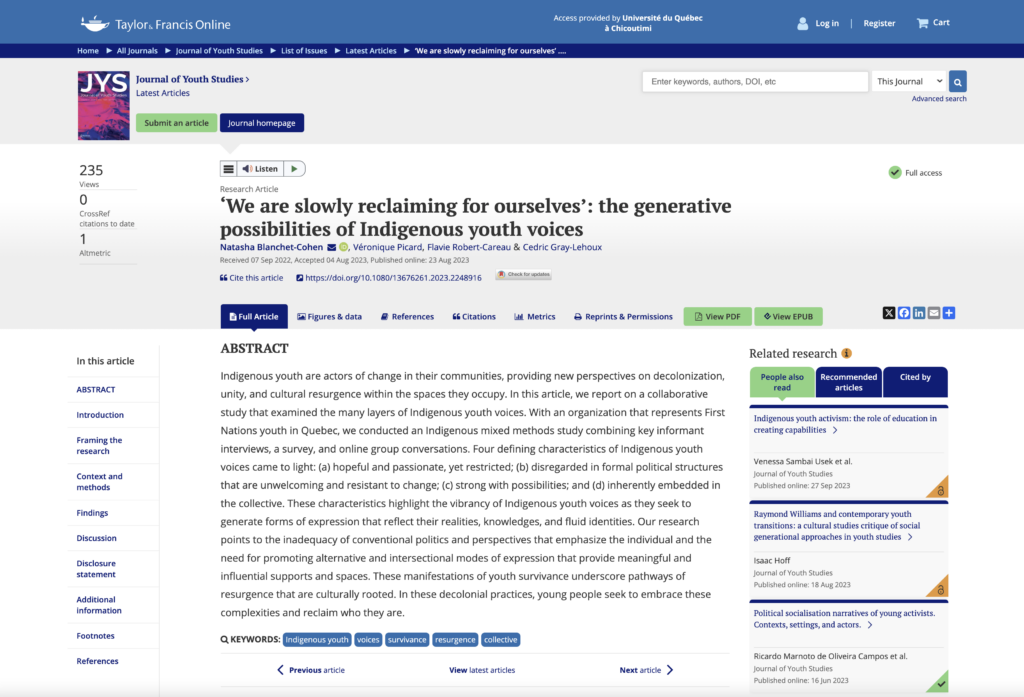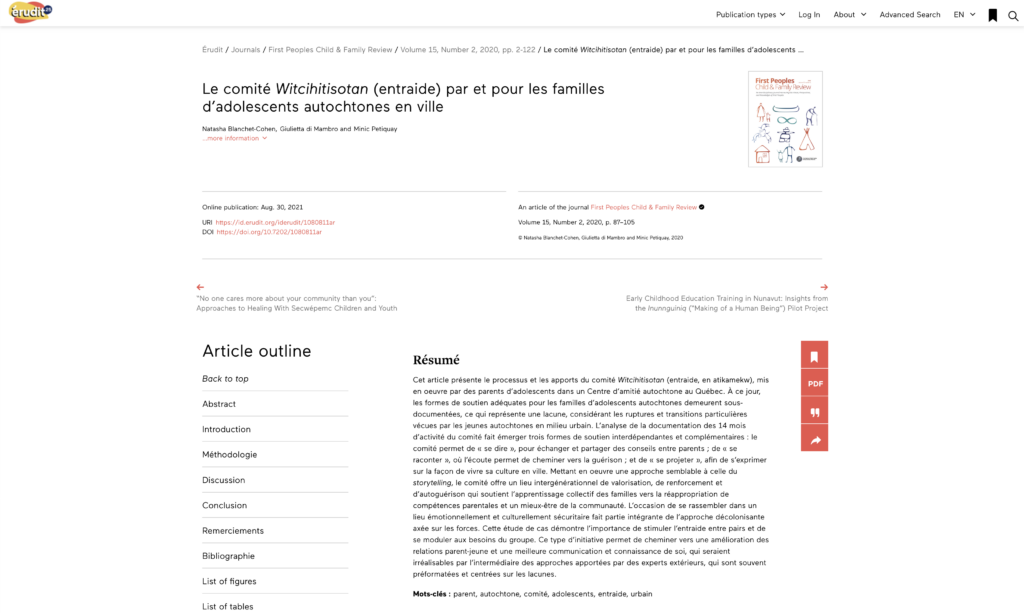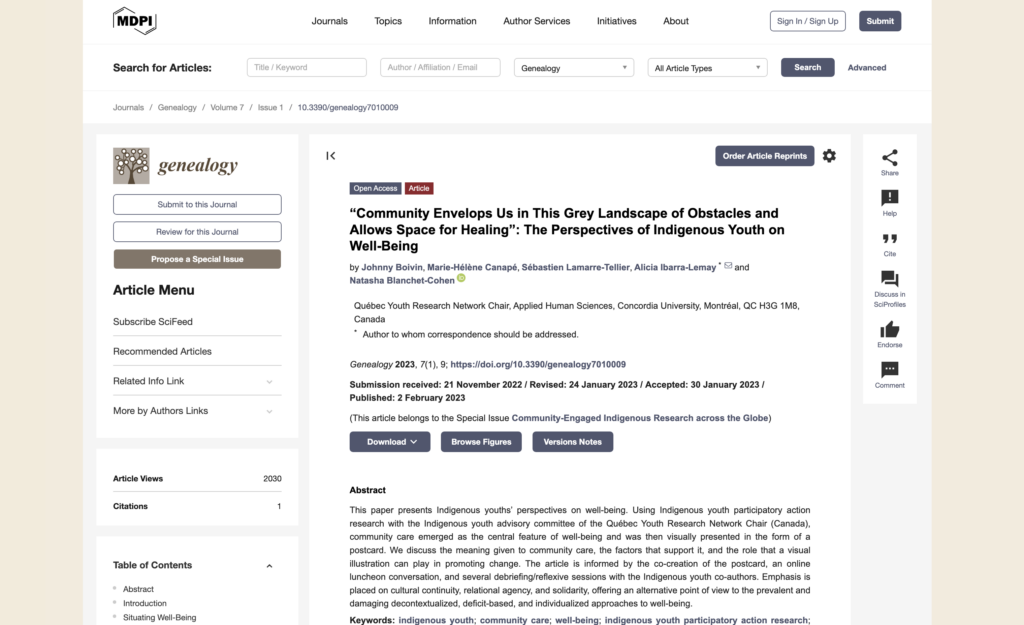Notice bibliographique
Barnett, T. A., Maximova, K., Sabiston, C. M., Van Hulst, A., Brunet, J., Castonguay, A. L. et al. (2013). Physical activity growth curves relate to adiposity in adolescents. Annals of Epidemiology, 23(9), 529-533.
Résumé
Purpose: Findings from prospective studies on associations between physical activity and adiposity among youth are inconsistent. Our aim was to describe physical activity trajectories during secondary school and examine the association with change in adiposity in youth.
Methods: Physical activity was measured in 20 survey cycles from 1999 to 2005; anthropometrics were measured in survey cycles 1, 12, and 19. Individual growth curves modeling moderate-to-vigorous physical activity (MVPA) and vigorous physical activity (VPA) were estimated. Estimates of initial level and rate of decline in MVPA and VPA bouts per week were included as potential predictors of body fat% and body mass index using age- and sex-specific linear regression.
Results: Complete data were available for 840 and 760 adolescents aged 12e13 years at baseline, followed from survey cycles 1e12 and 12e19, respectively. Among girls, yearly declines of one MVPA and one VPA bout per week during earlier adolescence were associated with increases of 0.19 (95% confidence interval [CI], 0.02e0.36) and 0.47 (95% CI, 0.015e0.92) units of body fat%, respectively. In boys, a yearly decline of one MVPA bout per week was associated with an increase of 0.38 (95% CI, 0.05e0.70) units of body fat% during later adolescence.
Conclusions: Obesity prevention programs should include strategies to prevent declines in physical activity.
Hyperlien
http://www.sciencedirect.com/science/article/pii/S1047279713002743Appartenance aux volets





























